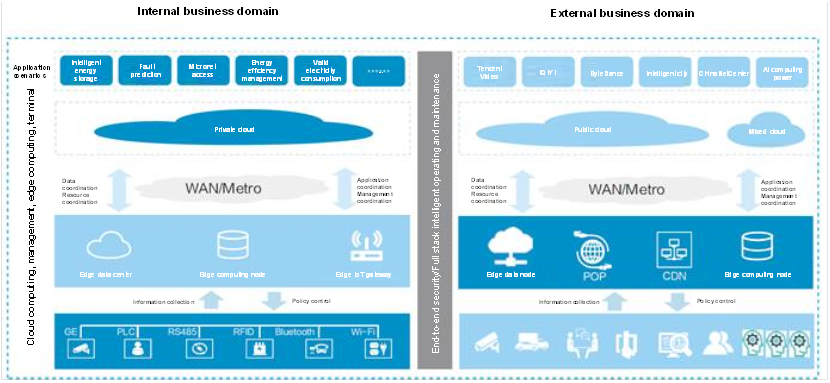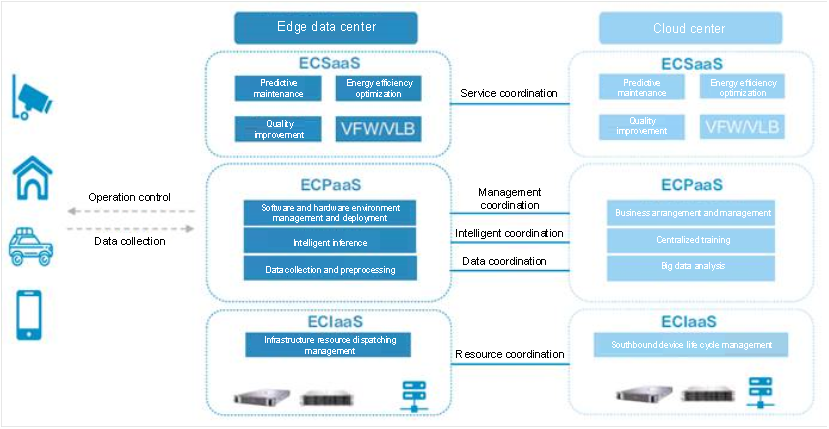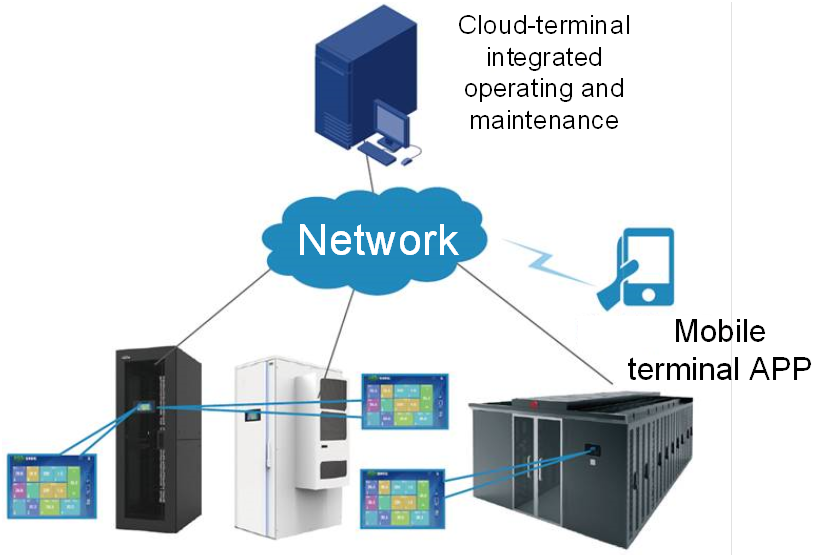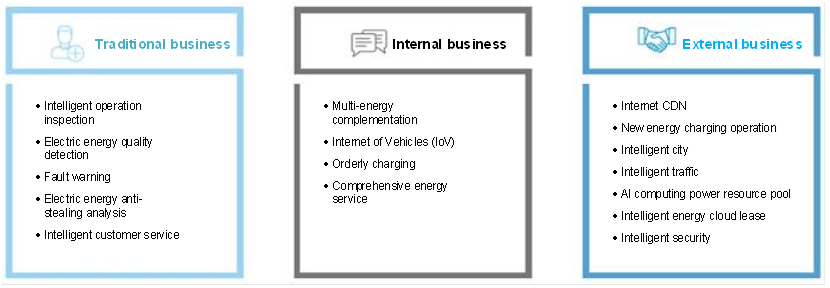Multi-Site Converged Edge Data Center Solution
I. Background
To better support service scenarios featuring high density, large bandwidth, and low latency, a good solution is to build a business platform at the network edge side close to users to provide resources such as storage, computation and network, while transferring some key service applications to the access network edge. By doing so, bandwidth and latency loss caused by network transmission and multi-level forwarding can be reduced. The source-grid-load-storage also has scenario-based demand for edge computing. With the connection of diversified new energy, the deployment of the intelligent power IoT terminal, and the use of virtual power plants, intelligent scheduling, online diagnosis, prediction & analysis and the two-way energy use and storage technology, the traditional information collection, monitoring and control function which is on a minute or hour basis is evolving to a second or millisecond basis. Therefore, the problems on bandwidth, quick service response, and so on urgently need to be solved via moving the traditional data center computing power to service front ends where substations serve as distributed nodes. There is increasing demand for user side to provide content storage, computing, and distribution services. This could better meet the requirements for short latency processing, large bandwidth transmission and localization.
Power grid companies that boast rich substation resources have proposed a "multi-station" mode which allows these companies to rely on the substation resources to build charging and swapping (energy storage) stations, data center stations and 5G base stations. In addition to substations, charging and swapping (energy storage) stations, and data center stations, further stations will be built, including the 5G base station, Beidou ground-based augmentation station, photovoltaic station, and comprehensive energy station. According to the multi-station solution, the headquarters data center undertakes storage and computational services, while the edge data center undertakes real-time and large bandwidth services to realize cloud-edge coordination.
When planning and building these stations, customers may face the following challenges:
How do the existing substation resources realize transformation and innovation?
How does the technology architecture support the edge computing service?
How does it control O&M costs?
How does it realize quick deployment?
II. Overview
As an optimal informatization partner serving the power industry for nearly twenty years, H3C, based on our Digital Brain Project, has proposed an integrated intelligent energy solution. H3C multi-station edge data center solution embodies a specific service support scenario under the general framework of H3C intelligent energy Digital Brain Project. The overall architecture is shown in Figure 1.

Figure 1 General framework of H3C multi-station edge data center
At the edge computing layer, H3C meets the requirement of multi-scenario adaptation in the power industry and provides different customer scenarios with three types of edge computing. For multi-station based application scenarios, H3C provides a modular edge data center solution, including modular intelligent cabinets, ICT hardware and edge cloud software. This makes H3C one of the few companies capable of providing the above solutions within the industry. On the basis of providing hardware infrastructure, H3C modular edge data center realizes cloud-edge coordination on resources, control and O&M. That you are not fighting alone is the characteristic of H3C edge data center.

Figure 2 Processing flow of H3C cloud-edge coordination
The equipment room of H3C edge data center uses a standard micro-module building mode. The equipment room provides a standard, modular data center that comes with standard interfaces, components, subsystems and overall architecture. Therefore, customization can be realized, which is suitable for quick deployment of cloud infrastructure in multi-station edge computing scenarios. The equipment room of H3C edge data center fully meets the regulatory requirements of the electric power industry and the compliance requirements of the company. In addition to meeting the requirements of new national standard Code for Design of Data Centers (GB 50174) and Class III of Information Security Technology — Baseline for Classified Protection of Cybersecurity (GB/T 22239), the equipment room also strictly meets the relevant requirements of the State Electricity Regulatory Commission on security protection for power secondary system and on isolation for intranet and extranet.

Figure 3 Infrastructure of H3C edge data center
III. Highlights
Qualification: Intelligent building class A, ISO certified, expert qualification, national registered constructor, engineer, UPTIM, PMP and LEED certified.
Energy efficiency: Certified by international authorities, and having a relatively better PUE in the industry.
Hardware: Modularized, container mode, POD factory prefabrication, quick delivery.
Operation service: Internal business services and external business services are isolated with scenario adaptation.
Software: Cloud-digital-intelligence-cybersecurity coordination, cloud-edge coordination.
O&M: Integral intelligent incorporation.
Ecology: Open platform, software and hardware decoupling.
IV. Customer’s value
The edge data center is generated for supporting new services with a shorter latency. IT resources in the cloud data center are migrated to the user side. Being close to such kind of data makes data processing convenient. In addition, the edge data center can effectively facilitate the implementation of emerging technologies such as mobile application, artificial intelligence and Internet of Things, accelerate promotion and use of emerging technologies in all traditional fields, and promote the generation of new service types. Multi-station integration requires commercial operation to provide the society with high quality services. Service application scenarios include but are not limited to the following major categories:

Figure 4 Multi-station integration application scenarios
H3C multi-station edge data center solution brings customers the following values:
H3C overall solution has the benefits of customization and quick delivery, which helps shorten the project construction period and realize quick value addition for resources.
H3C cloud-edge coordination architecture solution allows customers to optimize traditional services, innovate service deployment, realize resource resilience and quickly put services online.
The integral remote O&M capability can effectively lower the cost of the multi-station data center and increase the time efficiency of O&M.
V. Excellent practice
As one of a few vendors that could deliver multi-station data center solutions, H3C can help customers avoid a series of problems such as numerous construction interfaces, uncontrollable delivery time and joint debugging. Currently, H3C multi-station data center solution has been deployed in many provinces on a large scale.

Figure 5 Multi-station application scenarios


